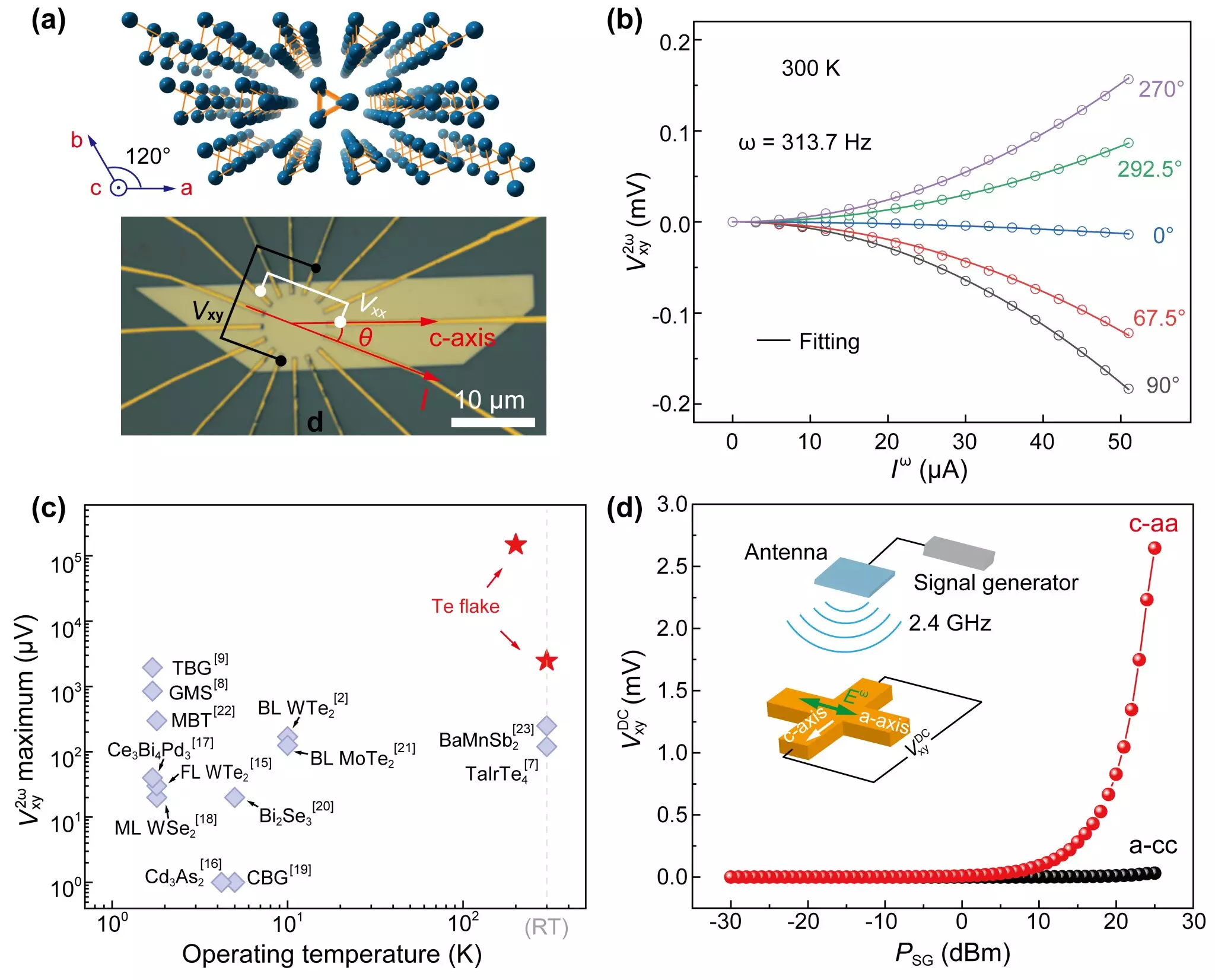Recent advancements in semiconductor research have unveiled the promising nonlinear Hall effect (NLHE) in tellurium (Te), a material that has garnered significant attention from scientists and engineers alike. This phenomenon, characterized by its second-order response to alternating current (AC), has shown potential for generating second-harmonic signals without external magnetic influences, offering exciting prospects for various electronic applications. The findings, recently published in *Nature Communications*, illuminate an often-overlooked pathway in semiconductor performance enhancement and energy applications.
Tellurium, a narrow-bandgap semiconductor known for its unique one-dimensional helical chain structure, stands out for its inherent ability to break inversion symmetry. This feature positions Te as an ideal candidate for exhibiting NLHE at room temperature. Despite earlier studies in other materials such as BaMnSb2 and TaIrTe4, which offered some insights into NLHE but suffered from low voltage outputs and operational temperatures, the findings presented by the research team signify a turning point. The ability to realize NLHE in Te under ambient conditions opens avenues for practical applications previously thought unattainable.
Breakthrough Findings
The research team’s exploration of Te thin flakes revealed a remarkable capability to modulate Hall voltage through external gate voltages, producing a maximum second-harmonic output of 2.8 mV at 300 K—an enhancement that is an order of magnitude higher than prior discoveries. The experiments highlighted that the manipulation of extrinsic scattering factors and surface symmetry breaking within the thin flake structure significantly contributed to this enhanced performance. This nuanced understanding of the mechanisms behind NLHE offers a more comprehensive perspective on nonlinear transport phenomena in solid-state materials.
Taking their findings a step further, the researchers replaced traditional AC currents with radiofrequency (RF) signals, achieving a groundbreaking form of wireless RF rectification. This development reflects a shift from conventional rectifying methods, which typically rely on junctions, to leveraging the intrinsic properties of Te. By demonstrating stable rectified voltage outputs across an impressive frequency spectrum of 0.3 to 4.5 GHz, the research team emphasized the adaptability and efficiency of Te-based devices in energy harvesting and wireless power delivery systems.
The contributions of this research extend beyond academic curiosity; they pose significant implications for the future landscape of electronics. With the newly identified NLHE in tellurium facilitating efficient energy conversion and device functionality, this material may well serve as a cornerstone for next-generation technologies. The research not only enhances scientific knowledge surrounding semiconductor behavior but also encourages the innovative integration of Te into electronic device design.
Led by Prof. Zeng Changgan and Associate Researcher Li Lin from the University of Science and Technology of China, this study highlights tellurium’s potential to redefine the capabilities of semiconductor technology. As researchers continue to dissect the intricacies of nonlinear transport phenomena, the findings surrounding Te open the door to an array of advanced electronic devices, positioning it at the forefront of materials science.


Leave a Reply